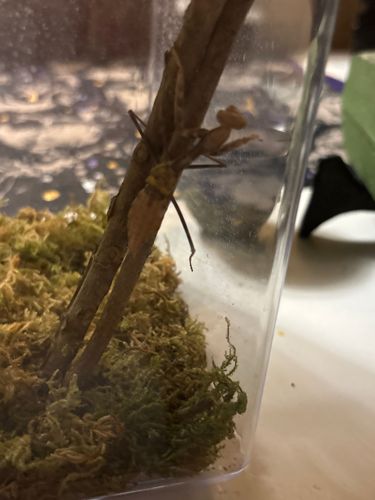Praying Mantis (specifically, an "orphan" mantis, likely a species like a Ghost Mantis given its appearance)
Scientific Name: Phyllovates chlorophaea (likely, given the appearance, also commonly known as the 'Orphan Mantis' or 'Dead Leaf Mantis')
Order & Family: Order: Mantodea, Family: Mantidae (or various other families within Mantodea, depending on the specific genus/species)
Size: Species in the order Mantodea vary widely in size, from as small as 1 cm to over 15 cm. For species similar to the one pictured, lengths typically range from 4 cm to 7 cm for adults.

Natural Habitat
Mantises are found in a variety of habitats, including tropical and temperate regions worldwide. They prefer areas with dense vegetation, such as gardens, meadows, grasslands, shrubs, and forests, where they can effectively camouflage themselves among leaves and branches.
Diet & Feeding
Strictly carnivorous. Their diet consists primarily of other insects and small invertebrates such as flies, moths, crickets, grasshoppers, and sometimes even smaller mantises. Larger species may occasionally prey on small vertebrates like lizards, frogs, small birds, or rodents.
Behavior Patterns
Mantises are predatory insects known for their distinctive raptorial front legs, which they hold in a 'praying' position, hence the common name. They are ambush predators and will often remain camouflaged, perfectly still, waiting for unsuspecting prey to come within striking distance. They have excellent eyesight and can quickly snatch their prey with their spiny forelegs. Some species are known for sexual cannibalism, where the female consumes the male during or after mating. They undergo incomplete metamorphosis.
Risks & Benefits
Mantises pose no risk to humans; they are not venomous and do not sting or bite unless severely provoked, and even then, a bite is harmless. They are highly beneficial insects in gardens and agricultural settings as natural pest control, preying on many common insect pests of crops and ornamental plants. They are appreciated by gardeners for this reason. Some species are also kept as pets.
Identified on: 8/17/2025